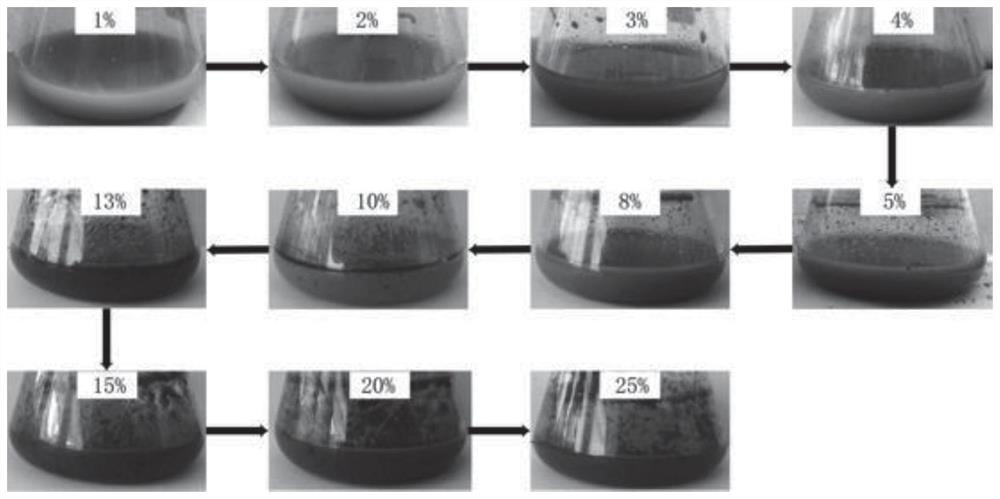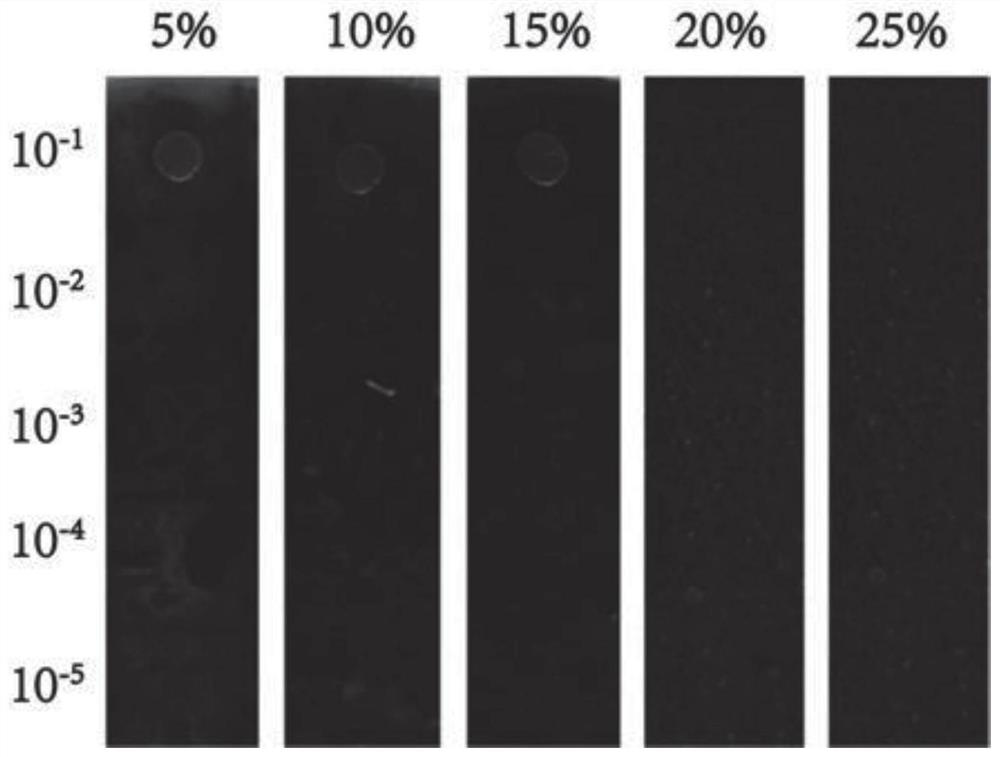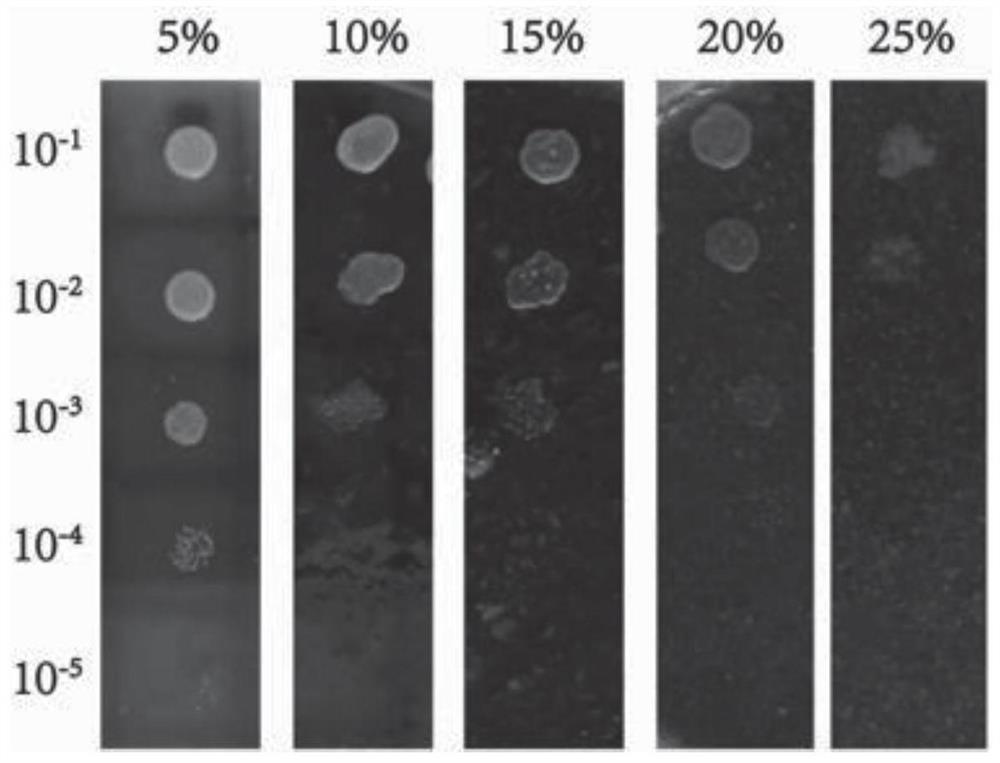Saccharomycetes capable of tolerating hot peppers and simultaneously utilizing glucose and xylose for fermentation and verification method of saccharomycetes
A verification method and glucose technology, applied in the field of yeast and its verification, can solve the problems of waste of resources and unavailability, and achieve high efficiency.
- Summary
- Abstract
- Description
- Claims
- Application Information
AI Technical Summary
Problems solved by technology
Method used
Image
Examples
Embodiment 1
[0040] A verification method for capsicum tolerance and simultaneously utilizing glucose and xylose fermenting yeast, comprising the following steps:
[0041] S1, screening out the high-yield yeast strain of ethanol in sugarcane molasses, denoted as LSK3;
[0042] Specifically, in this example, 5 g of sugarcane molasses was added to YPD liquid medium containing 2% glucose, and after shaking overnight for 24 hours, 1 mL of culture solution was taken out and diluted with sterile water for 10 -6 ~10 -8 times, respectively coated on the YPD solid medium plate containing 2% glucose, and cultured for 12 hours. After a single colony grew, pick it into the liquid medium and cultivate it for 12 hours. Take a small amount of bacterial liquid and observe the colony shape under a microscope to determine the yeast strain. The ability of each yeast strain to ferment and utilize glucose was measured, and the strain with stronger ethanol production ability was selected and named as LSK3 stra...
Embodiment 2
[0064] A yeast strain that is tolerant to capsicum and simultaneously utilizes glucose and xylose to ferment is the strain obtained through the verification of the method in Example 1, and is a high-yielding ethanol strain selected based on sugarcane molasses and obtained through capsicum tolerance adaptive evolution, At least it can be used for microbial fermentation of food waste containing capsaicin and / or xylose, or as a basic strain for constructing better strains.
PUM
 Login to View More
Login to View More Abstract
Description
Claims
Application Information
 Login to View More
Login to View More - R&D
- Intellectual Property
- Life Sciences
- Materials
- Tech Scout
- Unparalleled Data Quality
- Higher Quality Content
- 60% Fewer Hallucinations
Browse by: Latest US Patents, China's latest patents, Technical Efficacy Thesaurus, Application Domain, Technology Topic, Popular Technical Reports.
© 2025 PatSnap. All rights reserved.Legal|Privacy policy|Modern Slavery Act Transparency Statement|Sitemap|About US| Contact US: help@patsnap.com



